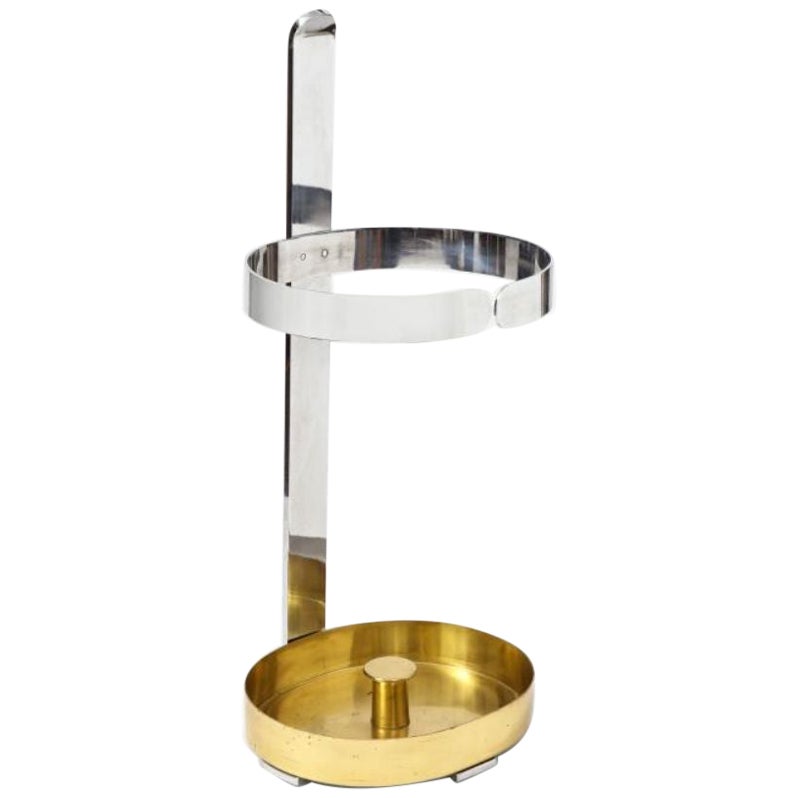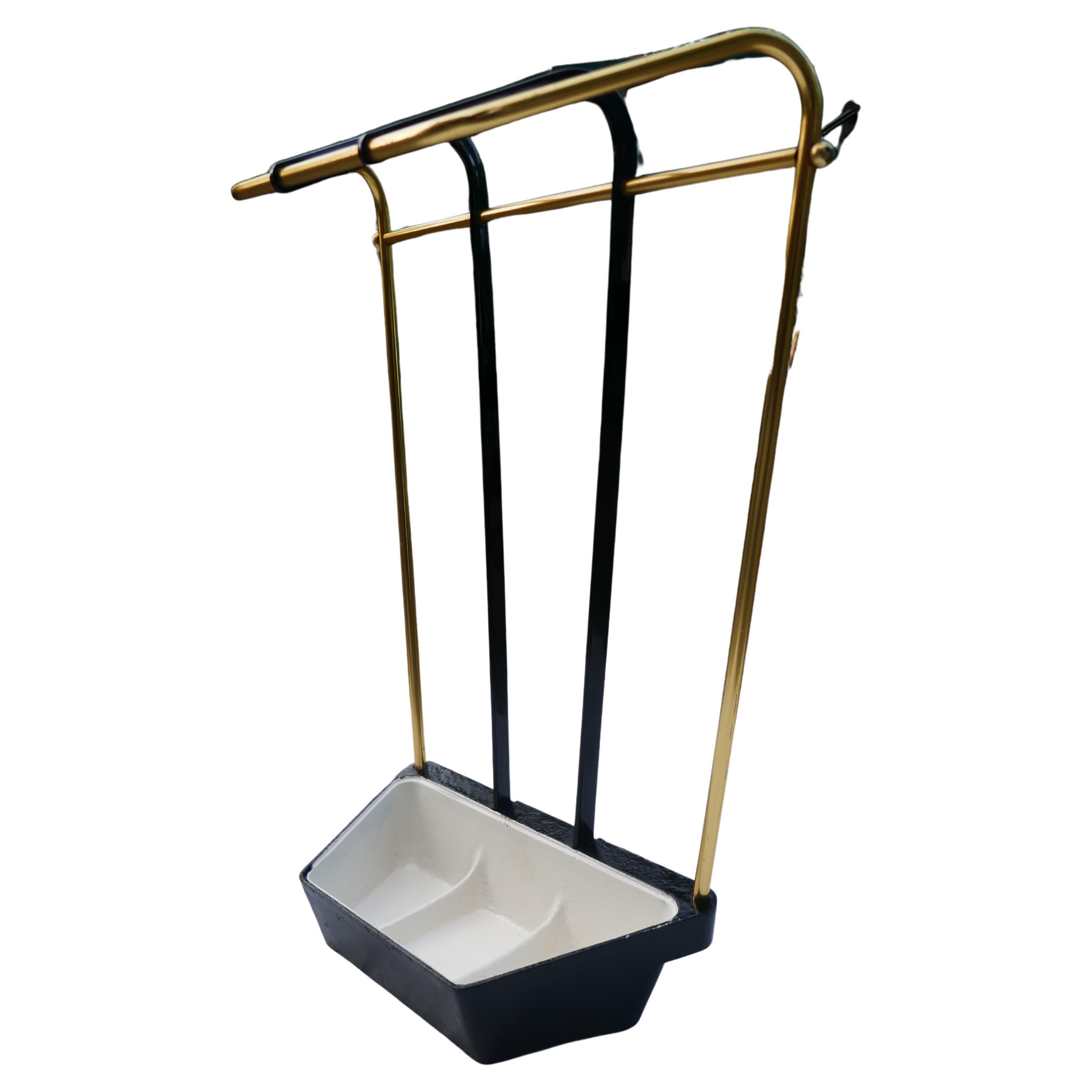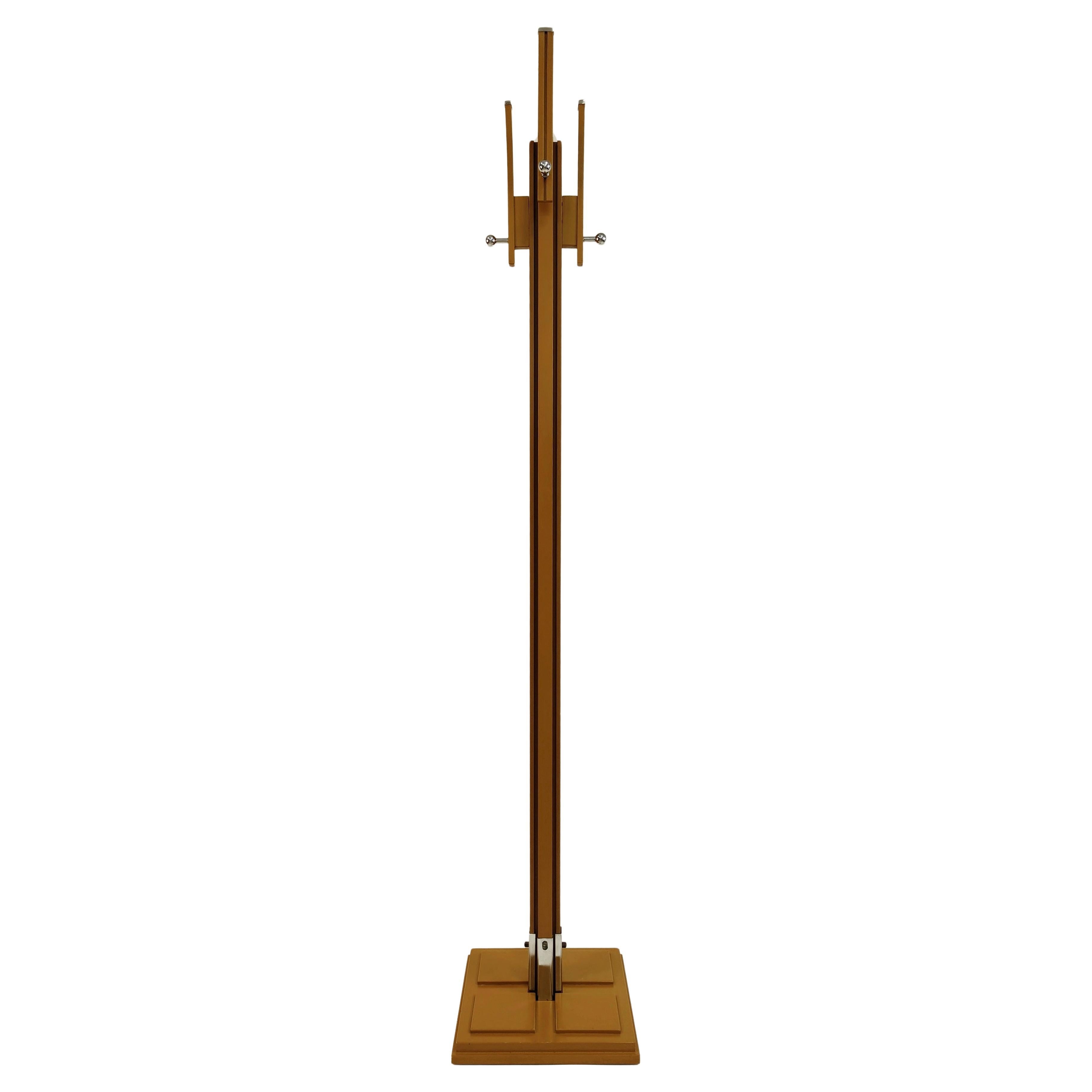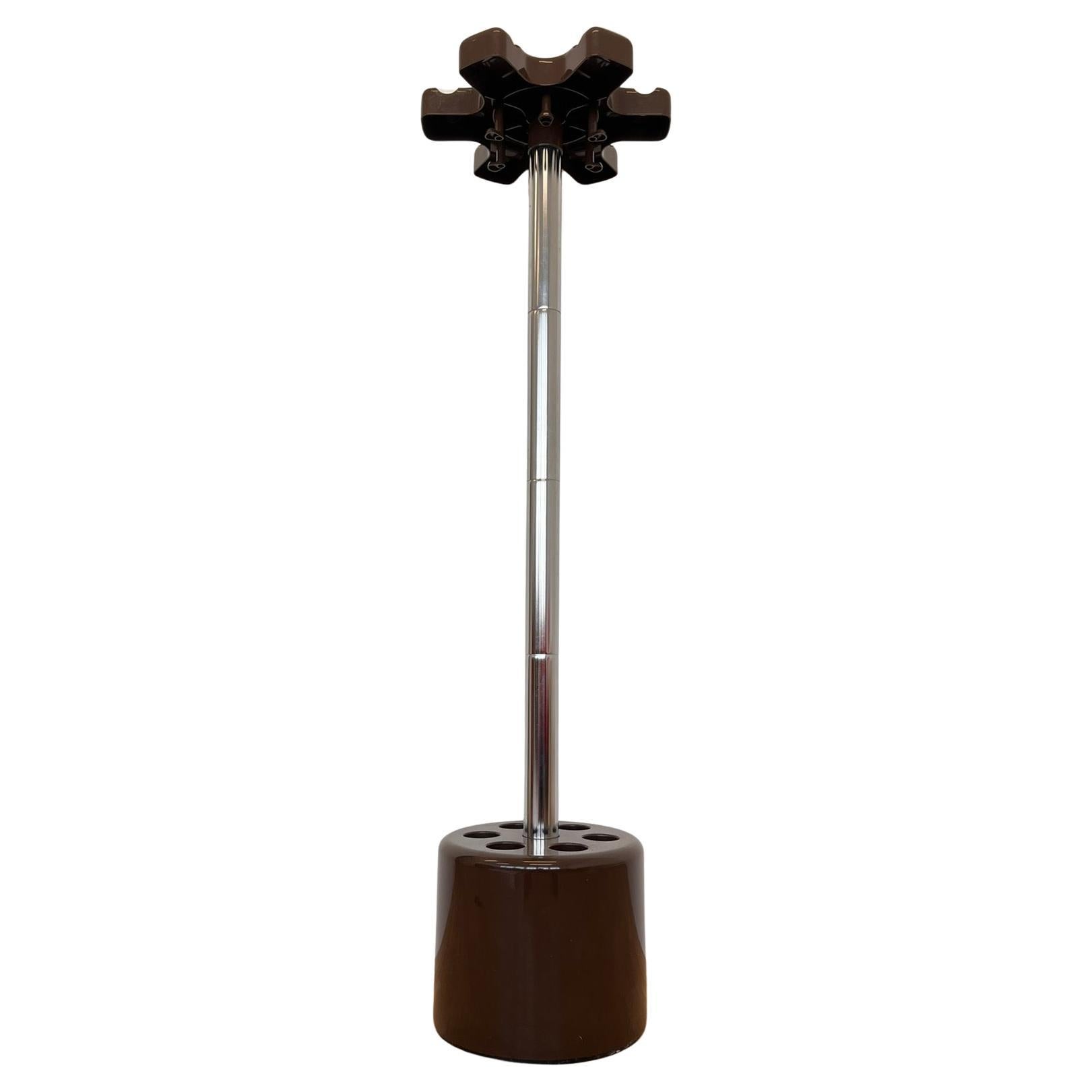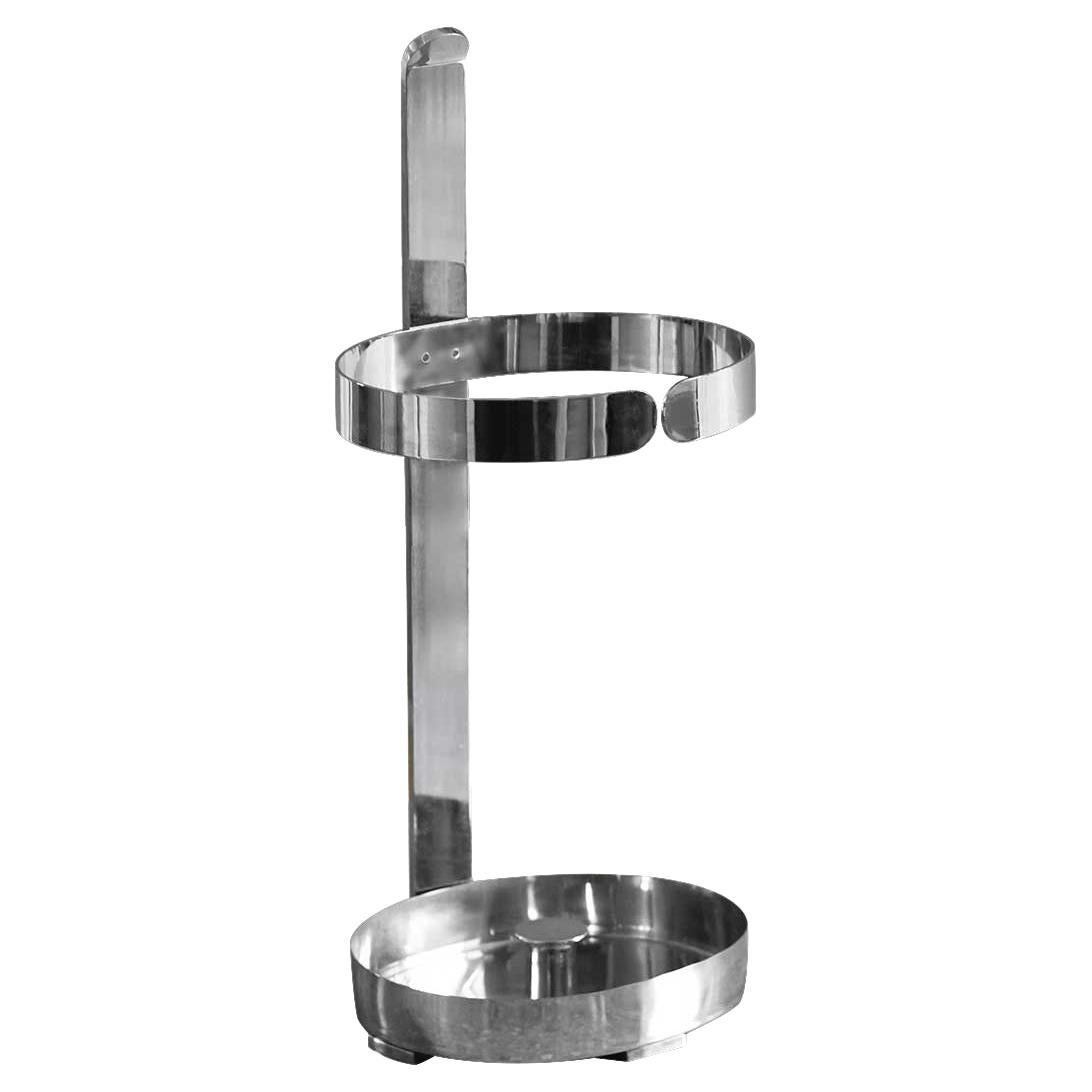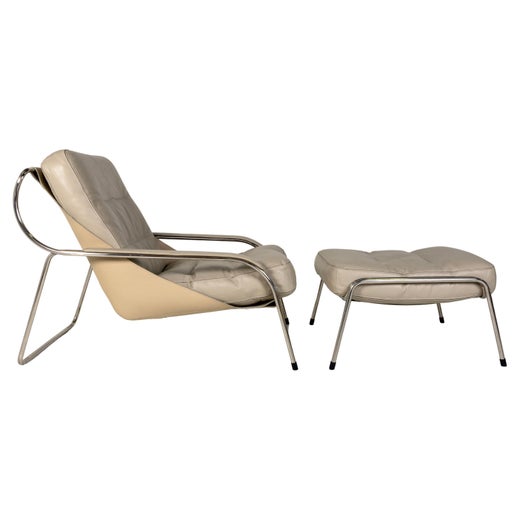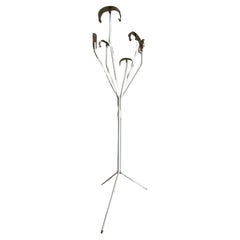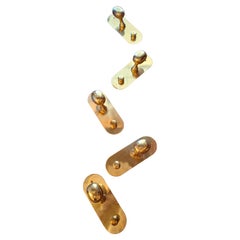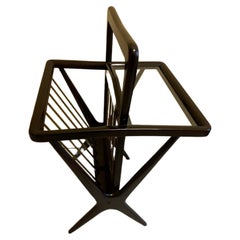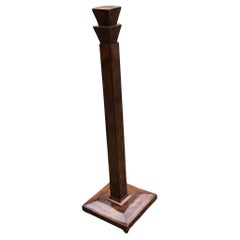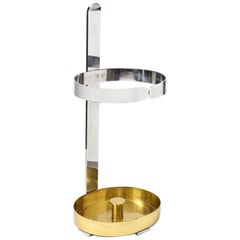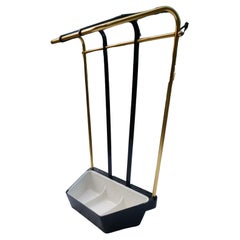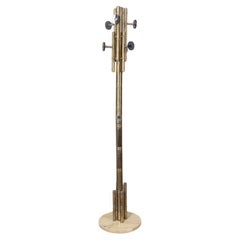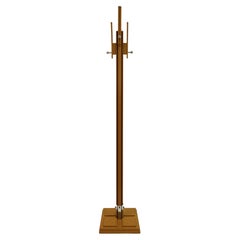Luigi CACCIA DOMINIONI - ZANOTTA - 1970s umbrella stand - Made in italy
About the Item
- Creator:Luigi Caccia Dominioni (Author),Zanotta (Manufacturer)
- Dimensions:Height: 31.5 in (80 cm)Width: 13.78 in (35 cm)Depth: 11.82 in (30 cm)
- Style:Modern (Of the Period)
- Materials and Techniques:
- Place of Origin:
- Period:
- Date of Manufacture:1970
- Condition:Wear consistent with age and use.
- Seller Location:Milano, IT
- Reference Number:1stDibs: LU2924340810052
Zanotta
Entrepreneur Aurelio Zanotta founded Zanotta in 1954 in Nova Milanese, Italy. Originally called Zanotta Poltrona, it specialized in traditional furniture. By the early 1960s, however, Zanotta had established a reputation for edgy mid-century modern design. Today’s vintage furniture collectors know the brand well for its innovative and wholly sculptural chairs, coffee tables and more.
One of Zanotta’s earliest successes was the Mezzadro stool — better known as the Tractor stool — designed by Pier Giacomo Castiglioni and his brother Achille in the late 1950s. In 1965, Zanotta was among the first furniture companies to work with expanded polyurethane foam and frameless construction, such as for the Throw-Away sofas and armchairs designed by Willie Landels. Another popular design was the Blow chair — designed by Jonathan De Pas, Donato D’Urbino, Paolo Lomazzi and Carla Scolari — viewed by many as a physical expression of late '60s carefree culture.
In 1969, amid the provocative movement we now call Italian Radical Design, Zanotta’s Sacco chair garnered major attention. The boundary-pushing beanbag chair was the brainchild of designers Piero Gatti, Cesare Paolini and Franco Teodoro who presented it to Aurelio Zanotta as a transparent vinyl sack loosely filled with small polystyrene balls. He suggested its signature brightly colored leather.
The Sacco chair won the 1970 ADI Design Museum’s Compasso d’Oro award. In 1972, the Museum of Modern Art in New York included it in the landmark exhibition “Italy: The New Domestic Landscape” curated by designer Emilio Ambasz. In 2020, it received a Compasso d’Oro ADI Lifetime Achievement Award for 50 years of enduring popularity. It is now in museum collections around the world including the Triennale Design Museum of Milan, the Musée des Arts Décoratifs in Paris, and London’s Victoria & Albert Museum.
After Aurelio Zanotta died in 1991, the company remained in his family and has been run by his three children since 2002. Zanotta continues to set the bar high for furniture design with trend-setting pieces.
On 1stDibs, find a collection of vintage Zanotta seating, tables and other furniture.
Luigi Caccia Dominioni
To join the centenarian club is a remarkable feat in itself, but to live for over a century and leave a lasting impact on the world of Italian mid-century modern furniture design — just as pioneering industrial designer and architect Luigi Caccia Dominioni had — is extraordinary. His vintage table lamps, coffee tables, chairs and other furnishings are demonstrative of exemplary technique, theory and quality workmanship — all characteristics of the Milanese designer’s signature style.
Caccia Dominioni graduated from Milan’s oldest university, the Polytechnic University of Milan, in 1936. A leading center for design innovation during the first half of the 20th century, the institution’s alumni includes notable Italian architects and designers such as Gio Ponti, Vittoriano Vigano and brothers Livio and Pier Giacomo Castiglioni. In 1937, the Castiglioni brothers and Caccia Dominioni opened a multi-award winning studio together and presented groundbreaking designs for radios in Bakelite shells at the 1940 Milan Triennial.
The Second World War forced Caccia Dominioni to pause his professional ambitions in order to serve in the Italian military, and the postwar years saw much of his most esteemed designs take shape. In 1947, alongside Ignazio Gardella and Corrado Corradi Dell’Acqua, Caccia Dominioni founded the furniture manufacturing company Azucena, where he designed iconic pieces such as the Catalina chair and a range of lighting that includes the Lp10 wall light, the Lsp3 wall light and the Lsp6 flush mount light.
Like a fine Italian wine, Caccia Dominioni got even better with time. He collaborated with the likes of Olivari and Lualdi well into his 80s, debuting legendary pieces such as the C.d.o. chair and the Super door. And while many of his celebrated architectural works materialized during the 1950s and 1960s — such as the Teatro Filodrammatici and the Galleria Strasburgo — one of Caccia Dominioni’s best known structures, the fountain in Milan’s Piazza San Babila, was built near the end of 20th century when the designer was 83 years old.
Caccia Dominioni was a winner of the Compasso d’Oro, one of the oldest and most prestigious awards in the design industry. When he died at 103 in 2016, he left behind an exceptional legacy of furniture design and architectural innovations.
Find vintage Luigi Caccia Dominioni chandeliers and pendants, floor lamps, armchairs and other furniture on 1stDibs.
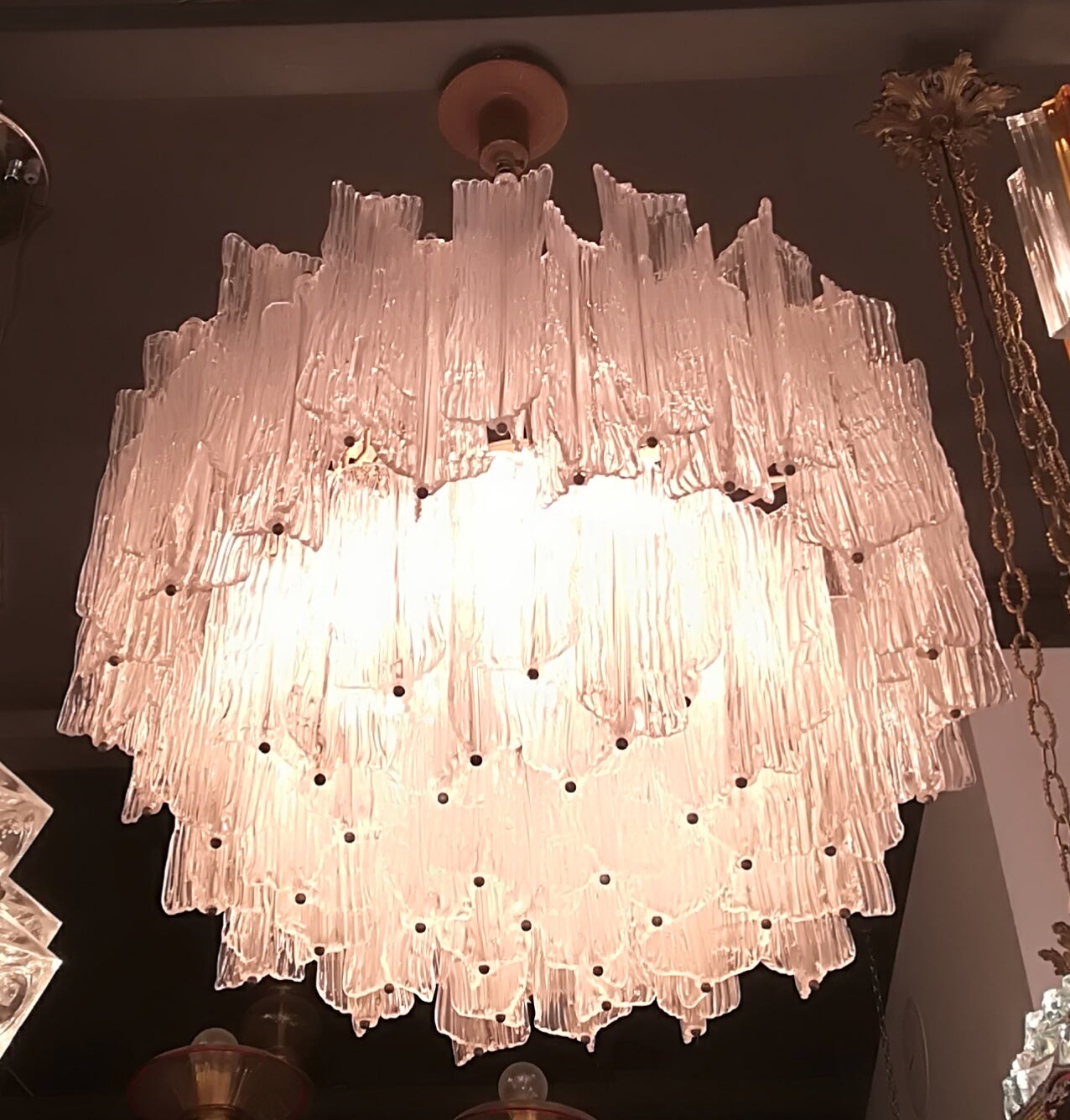
- ShippingRetrieving quote...Shipping from: Milano, Italy
- Return Policy
More From This Seller
View AllVintage 1960s Italian Mid-Century Modern Hat Racks and Stands
Brass, Chrome
Vintage 1950s Italian Other Serving Pieces
Brass
Mid-20th Century Italian Mid-Century Modern Center Tables
Brass
Vintage 1930s Italian Other Pedestals
Wood
Vintage 1970s Italian Mid-Century Modern Floor Lamps
Steel
Vintage 1960s Italian Mid-Century Modern Floor Lamps
Bamboo, Wicker
You May Also Like
20th Century Italian Modern Umbrella Stands
Brass, Chrome
Vintage 1950s German Modern Umbrella Stands
Metal, Brass
Vintage 1960s Italian Mid-Century Modern Coat Racks and Stands
Crystal, Marble, Brass
Vintage 1960s Italian Modern Coat Racks and Stands
Wood
Vintage 1970s Italian Mid-Century Modern Coat Racks and Stands
Metal
Vintage 1980s Italian Umbrella Stands
Metal
